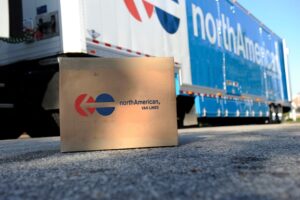Moving Terms You Need to Know
July 28, 2023
Tips From Our Moving Experts
It’s important to know what these terms mean in order to make the best decision you can about whether you want to hire a mover. Knowing these terms can also help you avoid getting scammed, since there are multiple options for securing your moving estimate and quote.
Accessorial (Additional Service) — Services under this umbrella include things like packing, unpacking or if you require a shuttle service. These charges are added on top of your transportation fee.
Advanced Charges — If you see these charges on your bill, they most likely were services not performed by the mover. It was required because of (most likely) your request — these services required a 3rd party.
Bill of Landing — This is essentially a fancy word for a receipt of your goods, which also includes a contract for transporting items to your destination. It’s important to read over this contract carefully, making sure you understand your responsibility versus the movers. If you do not understand everything, do not sign it. Plus it’s important to keep a copy for your records.
Binding and Non-Binding Estimate — When you get an estimate from a mover, there will be two options. The first is a binding estimate — which will guarantee that the cost of your move will be based on the quantities and services included in the estimate. A Non-binding estimate is simply a quote that’s just that — an estimate, on moving day you will be charged for what is actually moved — including the weight of your items and the tariff provisions in effect on that day. Beware of “low ball” non-binding estimates — they appear low in the estimate, but the prices dramatically increase on moving day.
Guaranteed Pickup and Delivery Service — Some moving companies offer a service that guarantees pick-up and delivery dates, and they provide reimbursements for delays.
High Value Articles — These items are defined as something you would like to move that is valued at more than $100 per pound. You should disclose these items to the mover or consider purchasing extra insurance protection for them. Examples include antiques, fine art, collectibles, jewelry, precious stones, vehicles, musical instruments, fine wine or spirits, designer furniture, high-end electronics, and family heirlooms. (Note, the exact definitions may vary from one company to another.)
Inventory — Inventory is a specific list of things you are moving, which includes the number of items and the condition of each.
Transportation Charge — These are charges for vehicle transportation.
Order for Service — This is a document that allows the mover to transport your household goods.
Pickup and Delivery Charges — These are charges that are separate from the transportation line item; these include a fee for transporting your items from the warehouse to your residence.
Shuttle Service — Sometimes (especially in big cities), your move may require the use of a smaller vehicle to get to your front door, so you will see a charge here for shuttle service.
Storage-in-Transit (SIT) — If your move requires temporary warehouse storage, you will see the charge under this line item.
Valuation – Valuation is how much “value” is placed on your shipment. This number will determine the ultimate valuation charge, which can go up or down, depending on how much liability you would like to place on the mover. The standard valuation is normally included in your total moving costs — but if you have items that are of higher value, consider purchasing more valuation in order ensure a higher compensation rate, in case something happens to your items during transit.
There you have it. Moving terms to know! Still have more questions? Looking for money-saving tips before the big Moving Day? Check out our FAQ. Or reach out to us for a free contactless quote, and we’d be happy to help walk you through the process.
Popular Posts
January 31, 2024
January 30, 2024
January 25, 2024


































